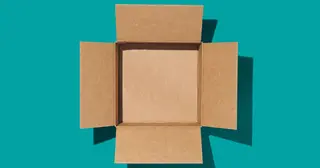
When the holiday season approaches in October, the popularity of unboxing videos marks a seasonal rise. These popular videos are pretty habit forming. But why are they so popular? What drives us to seek out and watch these videos in massive droves? Turns out, it may all be in our heads.
According to media psychologist, Dr. Pamela Rutledge, there are a few reasons.
First, there is an anticipation and intrigue. What’s in the box? “There is speculation in your own brain about what might or might not be in it,” says Rutledge. And there is the reveal, which is the payoff. The viewer gets a reward from seeing what is inside and seeing how it matches up against whatever they expected it to be. “So there is actually a neurological reward, big or small, but that completion of knowledge or the understanding is part of what drives it. People are just curious.”
Next, unboxing videos could be considered a story that is shared among people — and a compelling story at that. The viewers are invited along as the person in the video talks to them, breaking through the so-called fourth wall — the conceptual barrier between performer and audience — and making the viewer an active part of the story. Rutledge says: “Even though you rationally know that that person in that video does not see you and that they taped it at some other time, part of your brain responds to it as if it was a normal social situation.”
Last, there is giving the viewer a similar experience in opening the box. According to Rutledge, watching the video won’t give the viewer the actual tactile experience but it will give them a lot of the same feelings because of the way our brain is wired. “It’s because we have mirror neurons. The same way that people watching someone can experience the same emotions. And the way that your muscles may then react. Your brain actually triggers the muscles in your body that would be required if you were trying to open the box.”
Roger Dooley, a neuromarketing expert and author of the book Brainfluence, agrees. In a report titled "Unboxing Better Customer Experiences" by Ernest Packaging, Dooley told Ernest: “It seems likely that seeing someone physically unbox a product allows us [to] experience the process in a more powerful way than, say, watching someone describe the items spread out on a table. In other words, seeing another person handle the items vicariously engages the viewer’s sense of touch.”



